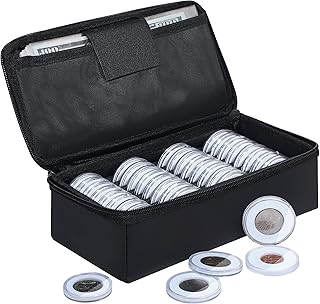Coins bearing the image of Queen Elizabeth II are more than mere currency; they are tangible records of history and pieces of numismatic art. Her recent passing and the subsequent succession of King Charles III have reignited interest in these coins, potentially altering their value in ways we are only beginning to understand. As we embark on this exploration of the most prized Queen Elizabeth II coins, we aim to provide a clear, educative, and engaging narrative that speaks to both seasoned collectors and curious newcomers alike.
Coins bearing the image of Queen Elizabeth II are more than mere currency; they are tangible records of history and pieces of numismatic art. Her recent passing and the subsequent succession of King Charles III have reignited interest in these coins, potentially altering their value in ways we are only beginning to understand. As we embark on this exploration of the most prized Queen Elizabeth II coins, we aim to provide a clear, educative, and engaging narrative that speaks to both seasoned collectors and curious newcomers alike.
A Legacy Cast in Metal
The image of Queen Elizabeth II has been a constant presence on various currencies across the Commonwealth for decades. Her reign, the second-longest in recorded history, has borne witness to monumental global changes, embedding her coins with historical context that fascinates collectors. Now, with the transition of the monarchy to King Charles III, the coins from Queen Elizabeth II's era have become finite snapshots of a bygone epoch – snapshots that are increasingly valuable to coin enthusiasts.
Determining Coin Value
When assessing the worth of a Queen Elizabeth coin, a myriad of factors come into play. Rarity, age, condition, and historical significance all contribute to a coin's market value. For instance, the scarcity of a coin can drive its price up considerably if collectors deem it crucial to complete a particular series or commemorate an event.
Examples of Highly Valued Coins
Take, for instance, the 1954 Penny and the 1953 Queen Elizabeth II Sovereign. The former, an experimental issue not intended for public circulation, boasts a value exceeding $100,000, while the latter, a coin minted exclusively for the royal family, is valued at roughly $57,230. These coins epitomize the pinnacle of collectibility due to their rarity, historical relevance, and the fascination they invoke.
Anticipating Market Variability
With a market as dynamic as that of rare coins, the valuations of items such as Queen Elizabeth II coins are subject to change. As we observe an increased collector interest following the Queen's passing, the demand may drive values higher still.
Spotlight on Unique Coins
The 1996 FEC Gold-Proof 2-Pound Coin
This particular coin was minted to commemorate the 1996 UEFA European Championship held in England. Limited to a scant 17,500 pieces, its exclusivity and connection to a notable event have made it a prime item for collectors, and its valuation has climbed far beyond its initial selling price.
Unveiling Coin Values
Valuing a coin such as the 1996 FEC gold-proof 2-pound piece can be approached in various ways. Consulting official sources like the Royal Mint or specialized coin platforms offers a fundamental understanding of a coin’s worth. Auction sites like eBay can also provide a snapshot of current market values. Professional coin dealers and numismatic societies offer the expertise and nuanced appraisals that collectors often seek for rare and valuable coins.
An Ever-Changing Landscape
The fluctuating nature of the coin market means that enthusiasts must stay current with trends and economic factors that influence coin valuations. A coin's rarity may suddenly be redefined, or its historical significance may be reevaluated, prompting a reassessment of its value. Staying informed and consulting various sources is key to effectively navigating the coin collecting arena.
Historical Coins of Note
The 1964 silver quarter is an example of a coin that captures the attention of collectors not only for its material value but for marking the end of an era for silver coinage in the United States. With one specimen reaching $38,400 at auction, this coin stands as a testament to the stories coins can tell and the history they represent.
Each coin, like the 1964 quarter or even a seemingly ordinary 1998 quarter, carries its unique narrative and potential worth. For those wondering how to assess their own coins’ values, it is crucial to consider factors such as condition and rarity, along with market trends and professional evaluations.
Engaging with Coin Collectors
Coin collectors' queries about the value of their coins, such as a one-dollar coin from 1991 or a 1964 Canadian penny, emphasize the necessity for accurate appraisal and insight into a coin's backstory. By arming oneself with knowledge from reliable sources and experts, collectors can better appreciate and evaluate their coin collections.
Embracing Numismatic Journeys
As we continue to delve deeper into the world of coins, we will uncover further treasures and stories behind these small, yet profound, relics of history. We will explore what drives a coin's worth and demystify the world of coin collecting and valuation for enthusiasts at all levels.
In conclusion, Queen Elizabeth II coins stand as historical artifacts and collectibles with fluctuating values influenced by events such as the monarch's recent passing. The market for these coins will likely continue to evolve, making it a promising and exciting area for collectors. Whether one possesses a cherished 1953 Sovereign or discovers a 1996 FEC gold-proof 2-pound coin, understanding the significance, appraising the value, and cherishing the history behind each piece are what make coin collecting a deeply rewarding pursuit. Stay connected with us for ongoing insights into the captivating realm of numismatics.
Information for this article was gathered from the following source.


![The Lincoln Penny Collecting Bible: [3 in 1] The Most Complete and Updated Guide to Finding Rare, High-Value Coins, Including Lincoln Cents Errors](https://m.media-amazon.com/images/I/71njB7UXTqL._AC_UL320_.jpg)

